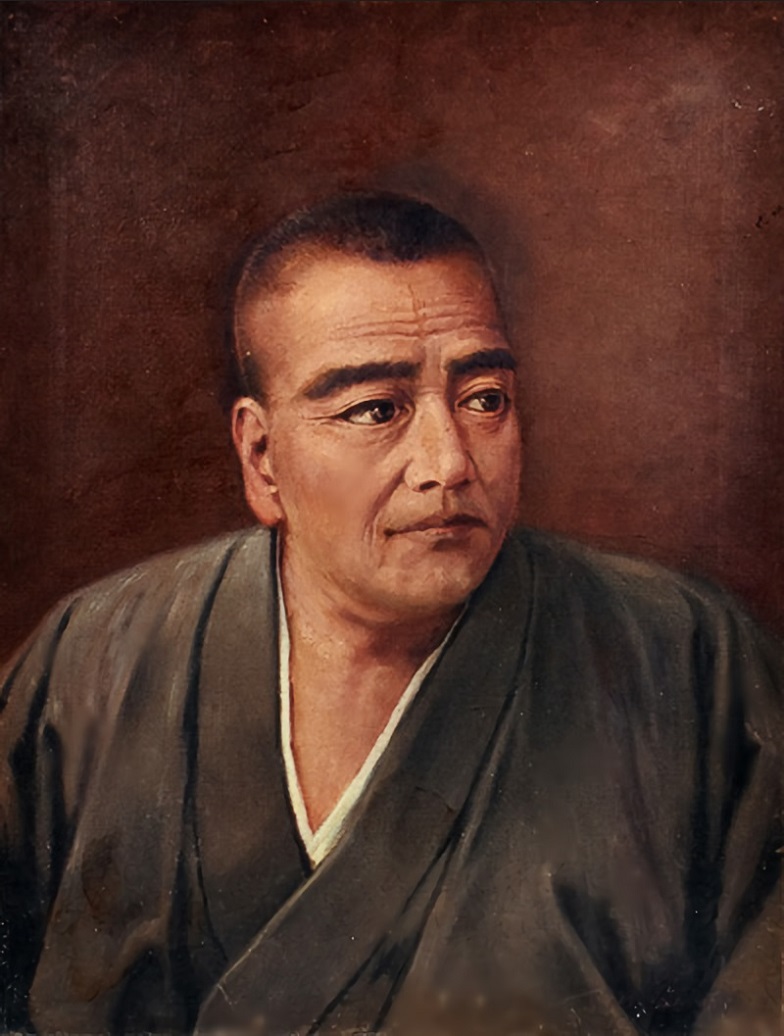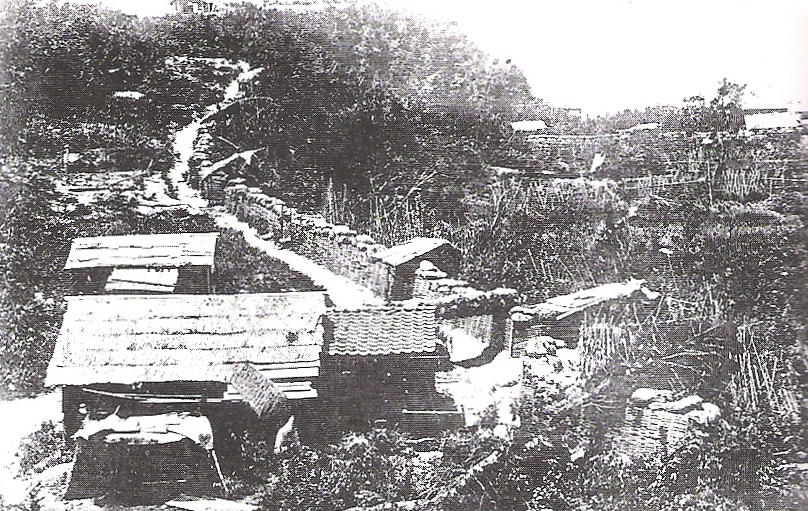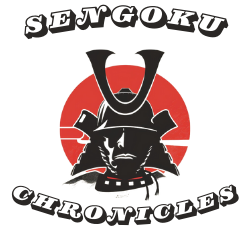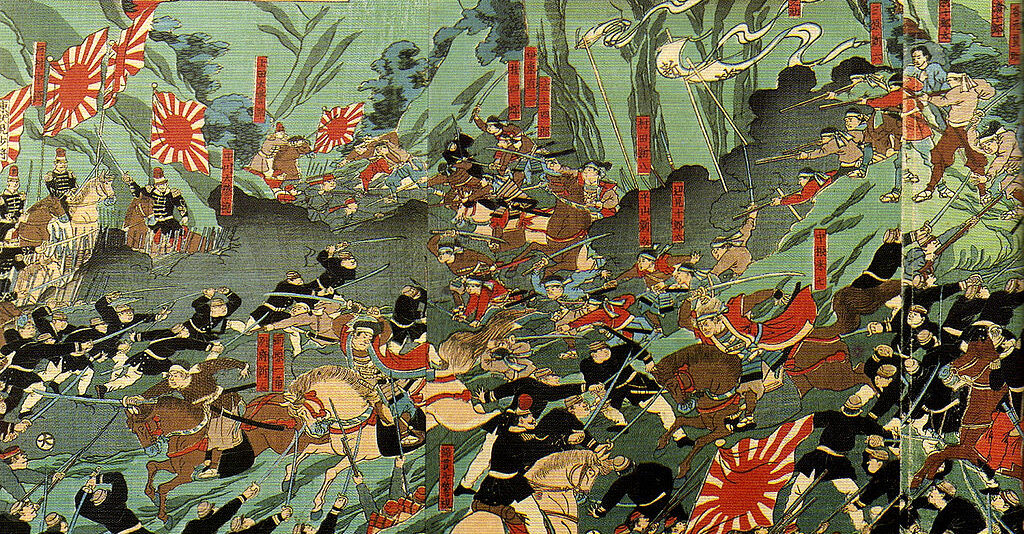Introduction
The Battle of Shiroyama, fought on September 24, 1877, is remembered as the final stand of the samurai. This clash took place near Kagoshima, at the southern tip of Japan. It marked the end of a long and bloody conflict between the traditional samurai warriors and the modernized Imperial Army.
The leader of the samurai, Saigō Takamori, was a prominent figure in Japanese history. Once a supporter of the Meiji government, Saigō eventually rebelled against the very changes he had helped bring about. His final stand at Shiroyama, alongside a small group of loyal followers, became a symbol of the dying samurai way of life.
The significance of this battle extends beyond military tactics. It represents the broader transformation of Japan from a feudal society into a modern nation-state. The Meiji government’s victory at Shiroyama solidified its efforts to centralize power and eliminate the old samurai class.
In this blog post, we will explore the events leading up to the Battle of Shiroyama, the key moments of the battle itself, and the lasting legacy of this pivotal event in Japanese history. We begin by understanding the context of Japan’s modernization and the samurai’s decline.
Historical Context
The Meiji Restoration (1868-1877)
The Meiji Restoration began in 1868, marking a significant shift in Japanese society. It aimed to modernize Japan by adopting Western technology and governance structures. These changes brought an end to the Tokugawa shogunate and restored imperial rule.
One of the most profound changes was the dismantling of the samurai class. For centuries, the samurai had held privilege and power in Japan. The Meiji government, however, sought to build a centralized military, which left little room for the traditional warrior class. Reforms like the ban on carrying swords and the introduction of conscription further eroded the samurai’s status.
Saigō Takamori, a prominent samurai leader, initially supported the Meiji Restoration. He helped to overthrow the Tokugawa shogunate. However, he grew disillusioned as the government moved toward policies that marginalized the samurai. He saw Japan losing its traditional values and believed the Meiji reforms had gone too far.
Satsuma Rebellion (January-September 1877)
The Satsuma Rebellion began in early 1877, driven by discontented samurai from the Satsuma Domain. Saigō Takamori became the face of this rebellion. He led thousands of samurai in a bid to resist the Meiji government’s reforms.
The rebellion was fueled by the desire to preserve samurai honor and traditions. It represented the last serious opposition to Japan’s modernization. Despite initial successes, the rebellion faced mounting difficulties. The modern Imperial Army was far larger and better equipped.
As the rebellion wore on, Saigō and his forces were pushed south. After a series of defeats, they retreated to Shiroyama, setting the stage for their final battle.

The Prelude to the Battle of Shiroyama
Saigō’s Last Stand
By September 1877, the samurai forces had dwindled to just 500 men. Saigō Takamori and his loyal followers retreated to Shiroyama, a hill near Kagoshima. This location offered some strategic advantages due to its elevation, but the odds were overwhelmingly against them.
The Imperial Army, led by General Yamagata Aritomo, surrounded the area with about 30,000 troops. The government forces were well-equipped with modern weaponry, including artillery and Gatling guns. Their goal was to completely crush the remaining samurai resistance and end the rebellion once and for all.
Saigō and his men knew they faced impossible odds. They lacked food, ammunition, and reinforcements. Despite this, they were determined to fight to the end. Saigō believed that surrender would dishonor the samurai code of bushido, and his men shared this sentiment. The samurai were ready to make their final stand.
The Samurai Force
The morale of the samurai at Shiroyama was high despite their bleak circumstances. They had chosen to fight alongside Saigō in defense of their ideals. Outnumbered by a modernized army, they relied on traditional weapons, such as swords and spears.
This small force was a remnant of what had once been a much larger rebellion. The Imperial Army had worn them down through a series of battles. Yet, the samurai’s commitment to their code of honor remained unshaken. They knew the battle would be their last but were determined to die with dignity.
The Battle Itself
Initial Artillery Barrage (Night of September 23-24, 1877)
As the night of September 23, 1877, fell, the Imperial Army launched a relentless artillery barrage. Modern cannons and Gatling guns pounded the samurai’s defenses on Shiroyama. The samurai had little to defend against this overwhelming firepower. Their defensive positions were quickly weakened by the bombardment.
The Imperial Army’s use of modern weaponry symbolized the new era of warfare that had overtaken Japan. The samurai, with their swords and spears, were no match for the devastating range and accuracy of the Imperial cannons. Despite heavy losses and no hope of victory, Saigō’s men remained resolute.
Throughout the night, the bombardment continued, thinning the ranks of the samurai and making their defenses more vulnerable to the impending attack.

Dawn Attack (Morning of September 24, 1877)
At dawn on September 24, the Imperial forces launched their final assault. With the samurai’s defenses nearly destroyed, the Imperial troops advanced up the hill. The sheer number of soldiers and their superior firepower overwhelmed the few remaining defenders.
In a desperate attempt to turn the tide, the samurai launched several brave counterattacks. Armed primarily with traditional weapons, they charged into battle, knowing it was their last. They fought with swords and spears, facing modern rifles and machine guns. Despite their courage, the samurai were no match for the Imperial Army.
Within hours, the battle came to an end. The Imperial Army secured a decisive victory. The last remnants of the samurai force were wiped out. Saigō’s men had fought valiantly, but their defeat was inevitable.
Saigō Takamori’s Fate
Wounded in Battle
As the Imperial forces closed in, Saigō Takamori was critically wounded during the final moments of the battle. While leading his remaining followers in one last charge, he was struck by gunfire. Some accounts suggest that the injury was severe, leaving him unable to continue fighting. Saigō’s men, knowing their leader could not survive, carried him away from the battlefield to a secluded spot on Shiroyama.
Saigō’s Death
The exact details of Saigō’s death remain a topic of historical debate. According to some sources, Saigō, adhering to the bushido code, chose to take his own life. This act of seppuku would have allowed him to die with honor, rather than be captured by the Imperial Army. Others believe that one of Saigō’s closest retainers, seeing his leader mortally wounded, helped him perform the ritual.
Another theory is that Saigō did not commit seppuku, but rather succumbed to his wounds before he could be captured. Despite differing accounts, what remains clear is that Saigō’s death marked the end of the Satsuma Rebellion. His passing symbolized the final collapse of the samurai’s resistance to the Meiji government.
Saigō Takamori’s fate cemented his status as a legendary figure in Japan. To many, he became a symbol of honor, loyalty, and the spirit of the samurai. His death on Shiroyama concluded not only the rebellion but also an entire era of Japanese history.
Aftermath and Legacy
End of the Samurai Era
The Battle of Shiroyama marked the definitive end of the samurai class in Japan. With the death of Saigō Takamori and the crushing defeat of his followers, there was no longer any organized resistance to the Meiji government’s reforms. The victory solidified the government’s policies of modernization and centralization.
Following the battle, the Meiji authorities further dismantled the samurai’s privileges. The wearing of swords, once a symbol of their status, became forbidden for all but the military and police. The conscription system introduced by the government ensured that Japan’s military would now consist of commoners, replacing the once elite samurai warriors.
This transformation paved the way for Japan’s rapid industrialization and its emergence as a modern nation-state. However, the fall of the samurai also marked the end of centuries-old traditions that had defined Japanese society for generations.
Saigō’s Posthumous Rehabilitation
Despite being branded a rebel at the time of his death, Saigō Takamori’s legacy took a surprising turn in the years following the Satsuma Rebellion. Public sentiment towards Saigō shifted as many began to view him not as a traitor but as a defender of Japan’s traditional values. His rebellion was seen as a noble, if doomed, effort to preserve the honor of the samurai class in the face of rapid modernization.
In 1889, the Meiji government officially pardoned Saigō posthumously. He was elevated to the status of a national hero. A statue of Saigō was erected in Tokyo’s Ueno Park in 1898, where he is depicted in a humble pose, walking his dog. This iconic image stands as a testament to his enduring legacy as the “last true samurai.”
Saigō’s story continues to inspire books, films, and cultural discussions. His life represents the tension between tradition and progress, and his name remains synonymous with samurai honor.
The Last Samurai and the Battle of Shiroyama
The 2003 film The Last Samurai, starring Tom Cruise and Ken Watanabe, drew heavy inspiration from the events surrounding the Battle of Shiroyama. While the film takes creative liberties with historical facts, its portrayal of the samurai’s struggle against modernization mirrors the real-life conflict between Saigō Takamori and the Meiji government.
In the movie, Ken Watanabe’s character, Katsumoto, is based on Saigō Takamori. Like Saigō, Katsumoto leads a band of samurai against a modernized Imperial Army, determined to preserve their way of life. The film’s climactic battle scene bears a striking resemblance to the Battle of Shiroyama, where samurai charge bravely against a heavily armed modern military.
Although The Last Samurai fictionalizes certain details, it captures the broader themes of the real event: the tension between tradition and progress, and the samurai’s commitment to honor in the face of inevitable defeat. The film helped bring international attention to this pivotal moment in Japanese history, further cementing the Battle of Shiroyama’s place in popular culture.
Conclusion
The Battle of Shiroyama was not just the final military engagement of the Satsuma Rebellion; it symbolized the end of an era in Japanese history. Saigō Takamori’s last stand, alongside his loyal samurai, represented the dying struggle of Japan’s warrior class in the face of a rapidly modernizing world. This battle was the ultimate clash between tradition and progress, with the modern Imperial Army decisively ending centuries of samurai dominance.
Despite their defeat, Saigō and his followers fought with a sense of honor that continues to resonate in Japanese culture. The aftermath of the battle ushered in a new age, where the Meiji government’s reforms reshaped Japan into a powerful, industrialized nation. The samurai, once central to Japan’s identity, were consigned to history. Yet, the ideals of bushido and loyalty embodied by Saigō live on in the national consciousness.
Saigō Takamori’s legacy, in particular, has grown in stature over time. From a perceived rebel, he was posthumously honored as a symbol of Japanese resilience and values. His story serves as a poignant reminder of the difficult choices that nations face in times of transition, and the cost of modernization on traditional ways of life.
The Battle of Shiroyama, though tragic, remains a defining moment in Japanese history. It encapsulates the dramatic changes Japan underwent in the late 19th century. Saigō Takamori’s name and the spirit of Shiroyama will always be remembered as symbols of honor, courage, and the end of Japan’s samurai era.
Additional Resources
Books
- The Last Samurai: The Life and Battles of Saigō Takamori by Mark Ravina
This biography provides an in-depth look at Saigō Takamori’s life, his role in the Meiji Restoration, and the Satsuma Rebellion. - Inventing Japan: 1853-1964 by Ian Buruma
A well-researched book that covers the period of Japan’s modernization, including the fall of the samurai class and the Meiji government’s reforms. - Samurai: The Last Warrior by Stephen Turnbull
Turnbull’s work delves into the history of the samurai, exploring their role in Japanese society and the final years of the samurai era.
Documentaries
- The Samurai and the Bushido Code (PBS Documentary)
This documentary explores the samurai’s history, the bushido code, and the impact of Japan’s transition into the modern era. - Meiji: Asia’s Transformation (NHK World)
A documentary focusing on the Meiji period and the rapid changes that transformed Japan, including the fall of the samurai.
Online Resources
- Japan Reference (JREF): Saigō Takamori
A detailed article on the life of Saigō Takamori, discussing his political career, role in the Satsuma Rebellion, and the Battle of Shiroyama. [Link: https://www.jref.com/articles/saigo-takamori.203/] - History of Japan Podcast: Saigō Takamori
An engaging podcast episode dedicated to the story of Saigō Takamori and the end of the samurai. [Link: https://historyofjapan.wordpress.com/] - Samurai Archives
A comprehensive database of samurai history, including a section on the Satsuma Rebellion and the Battle of Shiroyama. [Link: http://www.samurai-archives.com/]

